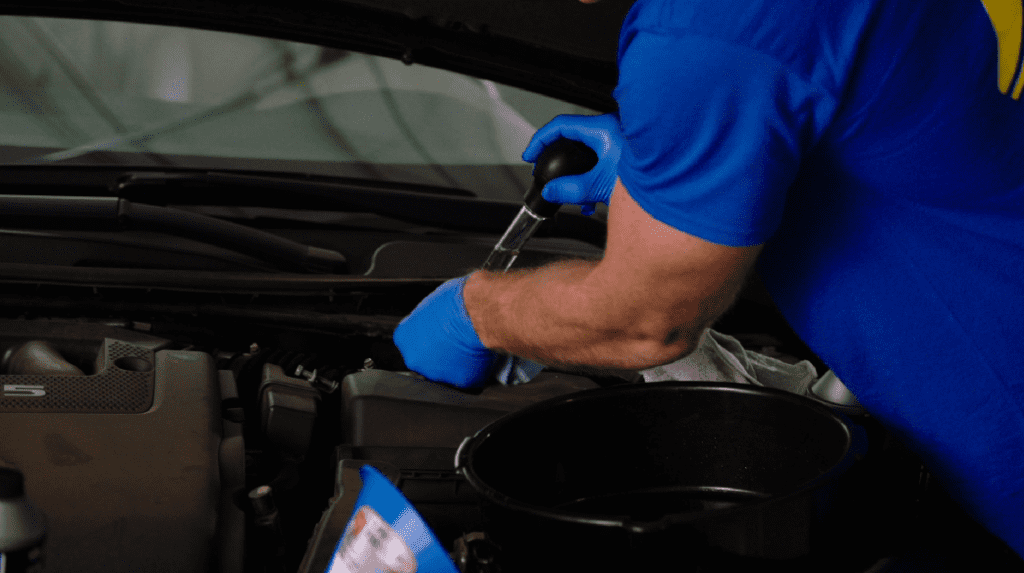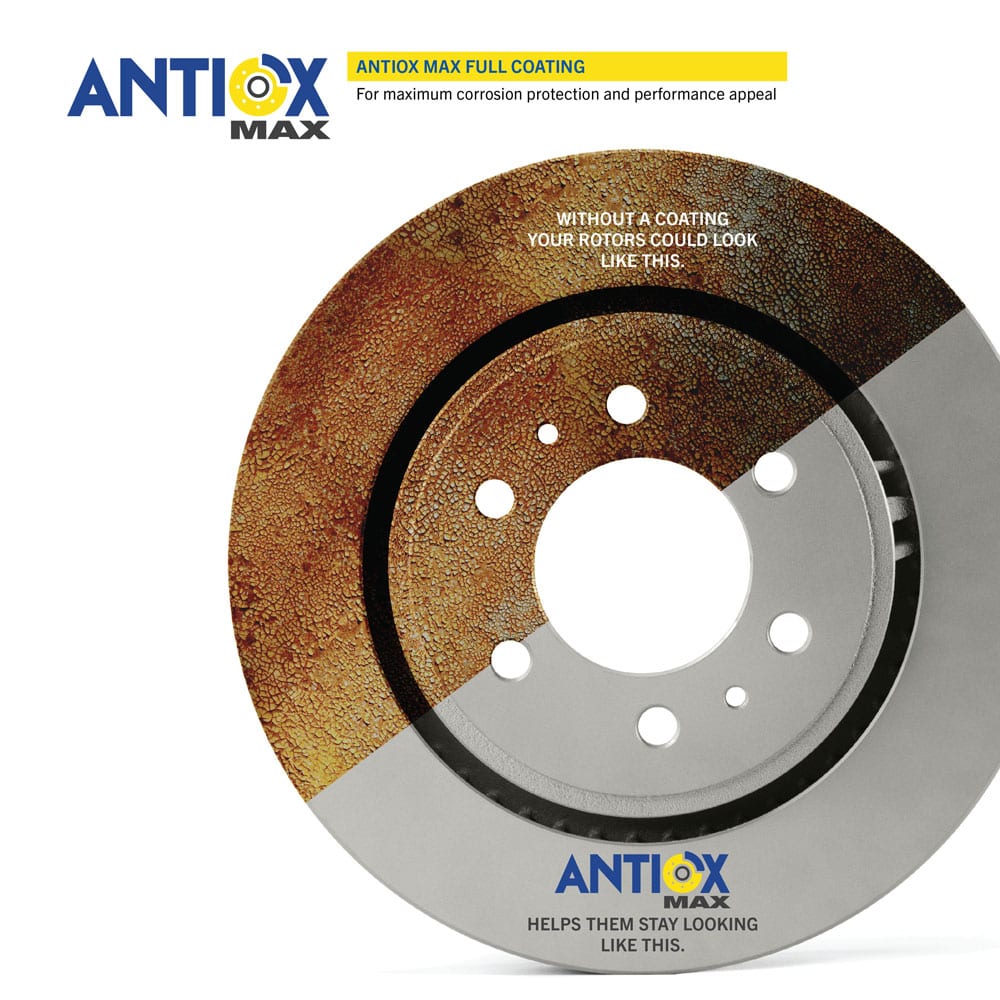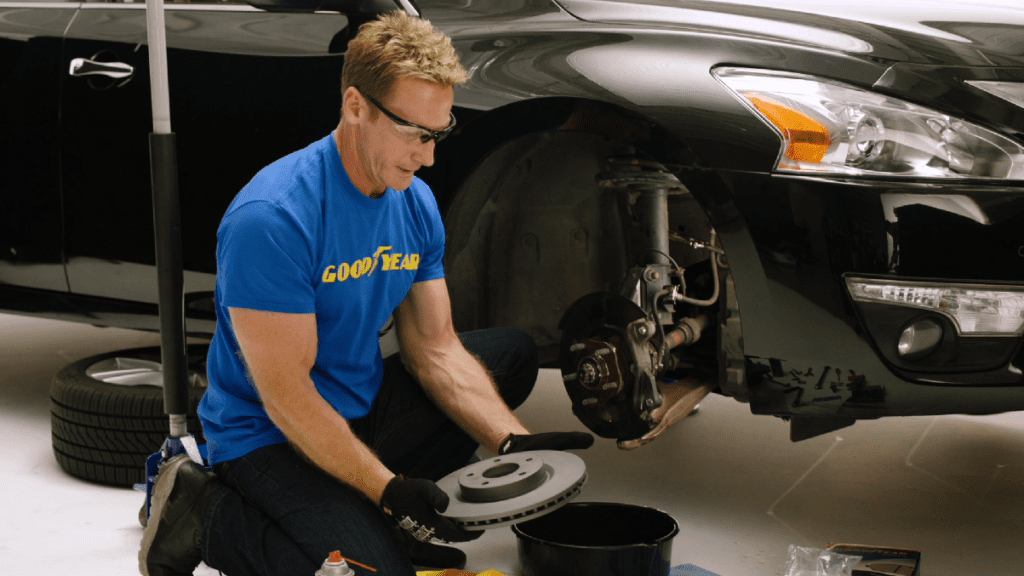Summer Has Arrived!
Hot Weather Means It’s Time to Maintain Your Vehicle’s Brakes
Hot weather means that summer is the ideal time of year to inspect and maintain your braking system. Brakes are sensitive to temperature shifts as well, and those long, hot summer dayscan accelerate wear and tear on different parts of your brake assembly.
The automotive experts at Goodyear Brakes offer some tips for maintaining your vehicle’s braking system, as well as advanced solutions for addressing any issues. The new line of Goodyear Brakes provides premium quality brake bundles, calipers, rotors, brake pads and all the hardwarefor today’s most popular vehicles, from daily drivers to SUVs as well as light trucks. This brake line is backed by a national warranty, decades of production experience and one of the best-known names in automotive excellence. The Goodyear Brakes product lineup offers the ideal solution for almost every braking need – whether drivers are looking to save money on their vehicle repairs, upgrade their performance or restore their perfect car.
Cleaning the Wheel Hub
Because the wheel hub sits outside the brake assembly, it can collect grime and debris more quickly than other brake components. Any time you wash your car, it’s a good idea to hose down the wheel hub and towel dry it to get rid of any excess particulates stuck to it. However, dirt isn’t the only thing you’ll have to contend with.
Since wheel hubs are exposed to the elements and adjacent to the braking assembly, they can get very hot. This combination can lead to corrosion and a significant amount of rusting. Surface rust on the wheel hub isn’t usually a big deal from a safety or performance perspective. To prevent long-term, deeper corrosion though, you’ll want to use steel wool to buff your wheel hub and remove moderate amounts of rust. Be sure to check both sides — rusting is more apparent on the inner side of the wheel hub, and this is also where you’ll want to focus your buffing efforts.
Checking Your Brake Fluid
Due to brakes being a hydraulic system, you need to ensure that braking fluid levels and braking fluid pressure are optimal. Low brake fluid pressure can cause a number of problems,from brake fluid leaks to slower braking and even drifting.
Brake fluid is usually located in a reservoir attached to the master brake cylinder. You can’t just unscrew the container and take a peek at the fluid levels, though. If your car has an anti-lock braking system, you might need to pump the brakes a number of times to build up pressure before opening up the brake fluid reservoir.
Clean the rim of the reservoir thoroughly with an absorbent rag before opening it. Any contaminants entering the reservoir — especially solids — can interfere with your brake effectiveness. Once you’ve wiped the rim down, unscrew the reservoir and check inside. If your brake fluid pressure levels are adequate, there shouldn’t be more than a half-inch gap between the opening and the top of the brake fluid. Observe the color of the brake fluid, too. Brake fluid tends to darken with age, so if your brake fluid is very dark, it’s likely old and will need replacing.

Replacing Worn Brake Pads
This, of course, isthe repair that most people think about when they hear “fixing your brakes.” In a disc-braking system, the brake pad clamps down on the rotor, exerting force to bring your car to a halt. This generates a lot of heat and puts immense strain on your brake pads, wearing them down over time. Brake pads are disposable and need to be swapped out every 35,000 miles or so, and even more often if you live in a crowded urban environment.
Goodyear Brakes offers premium brake pads manufactured in the USA that are specifically formulated to provide maximum stopping effectiveness, control and durability. The patented Vulcan Braid Shims technology is designed to eliminate noise during operation. Goodyear Brakes brake pad slots and chamfers match original equipment specifications to control vibration and brake fade. All Goodyear Brakes brake pads have a powder-coated backing plate for maximum rust and corrosion protection.
You can determine your brake system product needs at www.GoodyearBrakes.com and find tips as well as guidance for performing your brake replacement. Enter your VIN or license plate number and it will display the brake components needed. You can easily order at (online partners) and you’ll be ready to replace your brakes in no time.
Inspecting Your Brake Calipers
Your car’s calipers are more durable than brake pads, but they don’t last forever either—they’ll need periodic servicing. They shouldn’t need to be replaced quite as often, but it’s always a good idea to give them a thorough inspection every time you service your brake pads.
After removing the hubcap but before replacing the brake pads, you’ll need to detach the calipers. This is a good time to inspect them for wear and tear. Calipers are subject to a great deal of corrosion, and rust often builds up on the surface. To prevent the piston from sticking and causing difficulties with braking, you should clean off any rust you find with steel wool before it penetrates to deeper layers of the brake assembly.
High-performance Goodyear Brakes calipers are built using exacting standards to match original equipment manufacturer (OEM) requirements and provide exceptional longevity, reliability and environmental responsibility. Every Goodyear Brakes caliper comes with the correct brackets and hardware to ensure a perfect installation. Goodyear Brake calipers come fully coated with the proprietary Antiox Max™ coating for maximum rust and corrosion protection.
The piston seals on the calipers are made of rubber and are particularly vulnerable to corrosion as well. Over time, the rubber hardens and can flake or develop holes. If this happens, you might experience a braking fluid leak. If your piston seals are leaky or corroded, you’ll want to replace the entire caliper assembly as soon as possible.

Checking Your Brake Rotors
It’s important to inspect the rotors when you’re servicing your brake assembly. If your rotors are unable to distribute heat evenly, they’ll develop spotting and ringing around thermal hotspots. If your calipers have been wearing on them improperly, uneven braking pressure can cause “dishing,” where the rotor becomes concave on one side. As with other metal parts in your brake assembly, rotors are subject to corrosion, too.
Once you’ve opened up the assembly, give your rotors a thorough inspection for signs of any of these problems. If they’re damaged or worn down, detach the rotor from the wheel studs. If there’s extensive rust buildup, you might have to give it a whack with a hammer to loosen it. Then swap in the new rotor and replace the assembly.

High-performance Goodyear Brakes rotors use the most advanced machining technology to build maximum performance, durability and safety into every rotor. Every rotor is CNC-machined to exact specifications to ensure efficient braking and quiet smooth operation and is 100 percent balance tested to eliminate vibration and enhance product life. Every rotor receives Goodyear Brake’s proprietary Antiox Max™ coating for maximum rust and corrosion protection, a critical protection needed for driving in inclement weather and brine-treated streets.
High temperatures and humidity mean that your brakes are especially susceptible to wear and tear during summer months. Summer is an excellent time to give your brake assembly a once-over, so whenyou have some free time, jack your car up, openthe assemblyand see if everything’s working as it should.

